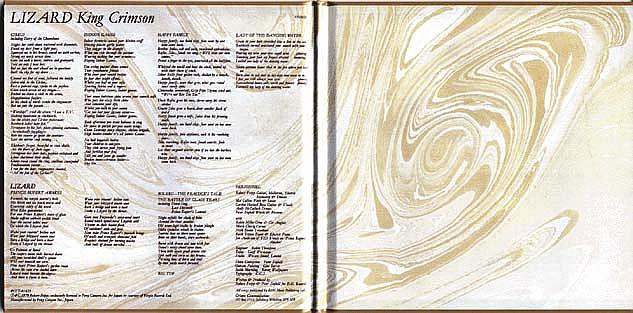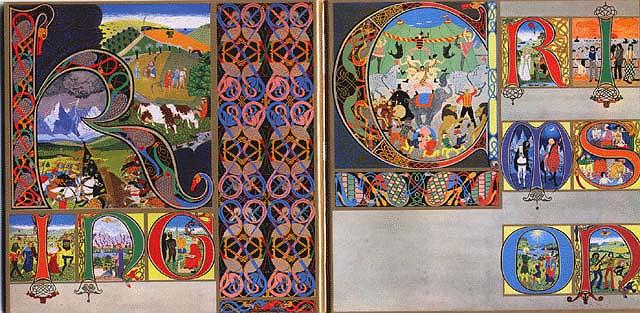- chapter index -
pg. 1 - Wilderness | pg. 2 - Prince Rupert Awakes | pg. 3 - The Sufis
pg. 4 - And there a Swan is Born | pg. 5 - Reels of Dream Unrolled | pg. 6 - The Peacock's Tale
pg. 7 - The Tibetan Book of the Dead | pg. 8 - Dawn Song | pg. 9 - Night Enfolds Her Cloak of Holes
pg. 10 - The Battle of Glass Tears | pg. 11 - Prince Rupert's Lament
- page index -
Illumination | Dervishes
site index
Translate from
The Sufi mystic and poet, Rumi, and Frederick II were contemporaries.
Rumi (1207 - 1273)
Frederick II (1194 - 1250)
"Rumi was born in Afghanistan to a family of learned Persian theologians. Escaping the Mongol invasion, Rumi and his family travelled extensively in the Muslim lands, performed the pilgrimage to Mecca and finally settled in Konya, Anatolia (Turkey), where he succeeded his father in 1231 as professor in religious sciences.
In 7 books, and 24,660 couplets, in Farsi and some Arabic, Masnavi is Rumi's most famous work . This work is also commonly referred to as the Persian Quoran."
- Life of Mevlana Jalalluddin Rumi
"Rumi taught two ways of knowing reality: the intellectual (solar) consciousness and the intuitive (lunar) consciousness."
- Islamic Mysticism
Frederick II may have been a Sufi.
"There was even less reason to fight against his Arab Muslim brothers. He is said to have been initiated into the Sufi mysticism of Islam."
- The Bloodless Crusader
"For now Prince Rupert's tears of glass
Make saffron sabbath eyelids bleed"
As discussed in Chapter Five, for Prince Rupert (Frederick II) to have "saffron sabbath eyelids", means that his perceptions are limited by both the Islamic (Eastern) and Christian (Western) perspectives. But saffron is, more specifically, related to Sufism.
". . .traditional Kashmiri legends state that saffron first arrived sometime during the 11th and 12th centuries AD, when two foreign and itinerant Sufi ascetics, Khwaja Masood Wali and Hazrat Sheikh Shariffudin, wandered into Kashmir. The foreigners, having fallen sick, beseeched a cure for illness from a local tribal chieftain. When the chieftain obliged, the two holy men reputedly gave them a saffron crocus bulb as payment and thanks. To this day, grateful prayers are offered to the two saints during the saffron harvesting season in late autumn. The saints, indeed, have a golden-domed shrine and tomb dedicated to them in the saffron-trading village of Pampore, India."
- History of Saffron Wikipedia
"Khwaja Muinuddin Chishti (1142-1236), founder of the Chishti Order, was a Persian from Khorasan, but settled among the Hindus of Rajasthan. His followers adopted the saffron color of the robes of the Hindu sages for their own coarse robes, and generally interchanged ideas and rituals with and even adopted the habits of the Hindu sadhus (mendicants)."
- Sufism and the Struggle Within Islam
by By Khaleb Khazari-El
And Lizard is an album steeped in Sufic philosophy.
Three basic tenets of Sufism:
"Removal of wahm 'opinion' 'conjecture' 'illusion' or the veil of ignorance...attain the 'vision of the heart' (ru'yat al-qalb), direct spiritual intuition
Goal of Fana' 'extinction' or 'annihilation' in God, 'Whatever exists is perishing (fanin), except His Face.' (Qur'an 55:27)
"To taste the sweet and the sour"
Haqiqah or Truth...the Goal, a mystical experience, called dhawq "tasting" the immediate reality of God (al-Ghazali)"
- Sufi Mystica
"The "Sufis were the ecstatic mystics who defied the authoritarian, fundamentalist, rational-minded theologians of the Islamic Church. It began around 800 AD with a group that formed around a woman called Rabi'a, a poet and ascetic and Bayazid of Bastami who started the "Baghdad School".
-Islamic Faith
"The second great sufi, disciple of the first and also of Basra, was a woman - Rabia al-Adawiyyah (d. 801), whose teachings emphasized the power of love. The idea of a woman as spiritual leader was itself an affront to the ulema, and to make matters worse, she was a former slave. Dhul Nunal-Misri (d. 861) was arraigned before Caliph Mutawakkil for espousing the doctrine of irfan - direct knowledge of the divine, usually translated as 'gnosis." Hussain b. Mansur, better known as al-Hallaj, a wool-carder, was accused of heresy and beheaded for his veneration of Jesus and his declaration "I am the truth." His followers thereafter disavowed - and often defied - all worldly authority. The noted sufi theoretician Yahaya Suhrawardi was executed on the orders of the great Saladin for of his refusal to adhere to orthodoxy. In the face of such repression, some sufis, such as Nuri (d. 907), preached renunciation from the world.
Ghazali himself was forced to flee Baghdad following a political upset and wandered as far west as Egypt."
- Sufism and the Struggle Within Islam
by By Khaleb Khazari-El
Frederick II corresponded with the Sufi Illuminist, Ibn Sabin.
"The teachings available to the astute European thinker
included such works as Ibn Sabin's Secrets of Illuministic
Wisdom and Suhrawardi's Wisdom of Illumination.
Frederick II von Hohenstaufen, ruler of Sicily,
corresponded with Ibn Sabin, Roger Bacon cites
Ibn Sabin in his own writings, and Suhrawardi's ideas
provided the foundation for Dante's works.
Illuminist teachers distinguish between
ordinary knowledge and a higher form of knowledge called
gnosis, direct knowledge, unveiling, witnessing, and tasting.
"He who tastes, knows."
- Knowledge Through Enlightening Experience
"He who will drink from my mouth will become like me."
- Jesus, Gospel of Thomas
return to page index
site index
Words and Illumination by Peter Sinfield
"The Illuminist Tradition has taken many names over the
centuries such as Hermeticism, Philosophia, Neo-Platonism,
Alchemy, Cabala, Magic, Gnosticism, Esotericism, Sufism.
This Perennial Tradition has been the single stream of
initiatory teaching flowing through all the great schools of
mysticism."
The Illuminist Lineage
"The Illuminist "secret teachings" were passed from
generation to generation through the Illuminist line of
transmission:
Semitic and Persian sources.
Isaiah (8th century B.C.E.)
Zoroaster (6th century B.C.E.)
Oriental sources:
Gautama, the Buddha (563-483 B.C.E.)
Hinduism
Taoism
Hermes
(indeterminate)
Pythagoras (died
497 B.C.E.)
Empedocles
(492-432 B.C.E.)
Socrates
(470-399 B.C.E.)
Plato (427-347
B.C.E.)
Jesus (4-29 C.E.)
Dionysius the Areopagite (1st
century C.E.)
Marcion (85-144 C.E)
Valentinus (second century C.E.)
Clement (150-220 C.E.)
Origen (185-252 C.E.)
Plotinus (205-270 C.E.)
Augustine (354-430 C.E.)
Geber (721-766 C.E.)
Ibn Massarah (died 921 C.E.)
Gerbert d'Aurillac (Pope Sylvester II) (born 940 C.E.)
Hujwiri (died 1063 A.D) The Revelation of the Veiled
El-Ghazali (1059-1111 C.E.)
Shahabudin Suhrawardi
(1145-1235) Gifts of Deep
Knowledge
Shihab al-Din
al-Suhrawardi (1154-1191)
The Wisdom of Illuminism
Ibn el-Arabi (1164-1240
C.E.)
St. Francis (1182-1226
C.E.)
Frederick II (1198-1250
C.E.)
Rumi (1207-1273 C.E.)
Albertus Magnus (1206-1280 C.E.)
Thomas Aquinas (1225-1274 C.E.)
- Western Illuminism, The Perrenial Tradition
by Norman D. Livergood
Suhrawardi, incidentally, was a Sufi martyr, one of the "prophets chained for burning masks".
Another of the Sufi martyrs was Sohravardi.
"One of the first mystics (1150-1191) killed by Saladin."
- Islam Data
























 Arachnophilia
Arachnophilia